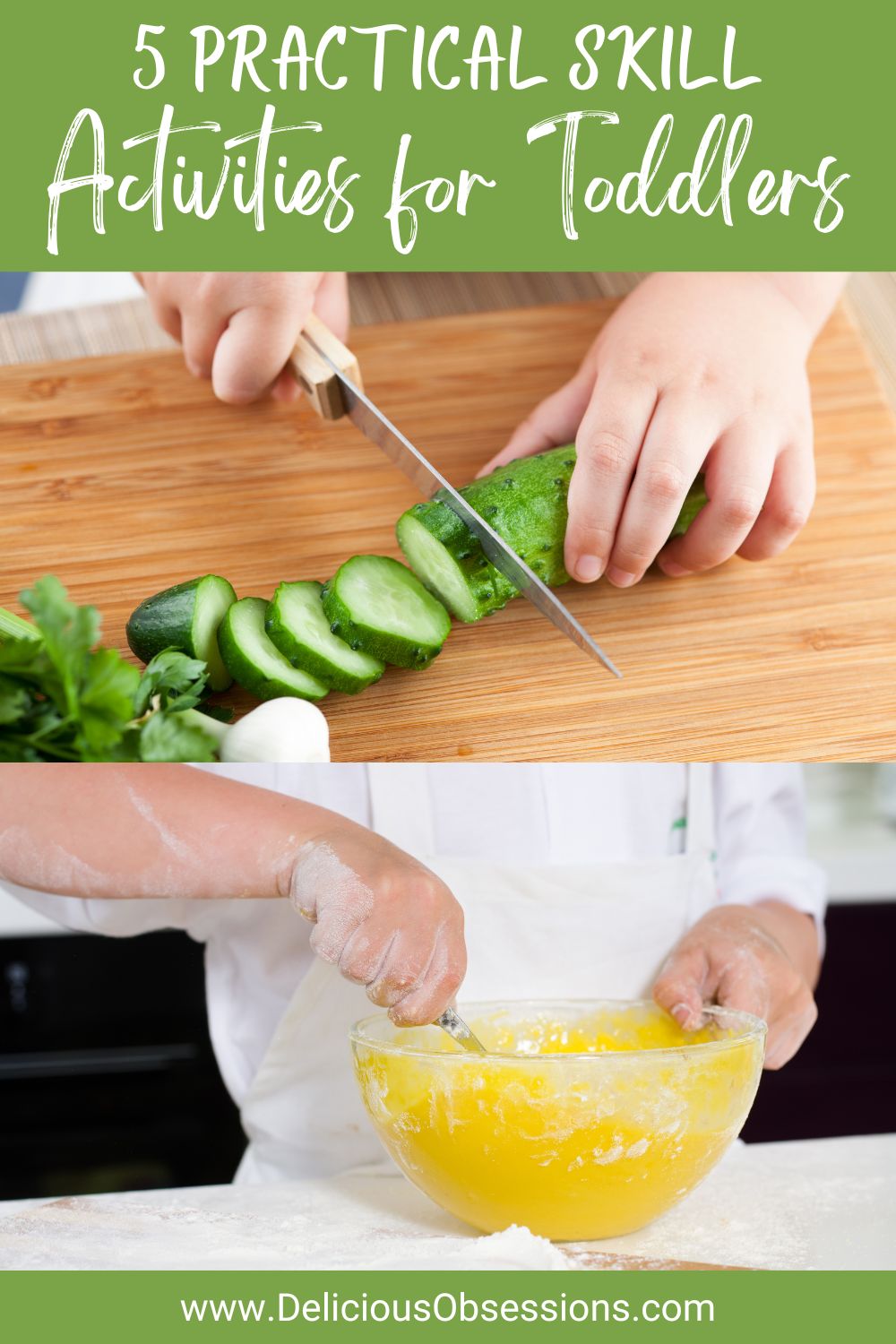FTC Disclosure: Delicious Obsessions may receive comissions from purchases made through links in this article. As an Amazon Associate I earn from qualifying purchases.Read our full terms and conditions here.
Toddlerhood is the ideal time to focus on practical skill activities that your child will need for their whole life. Their brains are eager and ready to learn and building skills helps them build confidence in themselves. The key is to keep it fun and low-pressure so your child wants to learn every day. In this post, I’ll be talking about 5 Practical Skill Activities for Toddlers that are fun and entertaining and will hopefully cultivate a lifelong love of learning!
I’m a huge advocate for child-led learning. I’m not too keen on the idea that every child has to fit into a stereotypical mold when they reach a certain age. All children learn at different rates and in different ways. Children have different interests at specific times in life, which influences the way that they want to learn and the things they are curious about during that phase. One of the best things that we can do as parents is sit back and observe our children as they play and explore so that we can see where their strengths lie, what their interests are, and what their learning style is.
Unfortunately, here in America, our educational system is not set up to allow for child-led development. Children are expected to learn at the “proper” rate for their age group. America’s public schooling system is set up to be based on standardized tests. Schools get funding based on their testing results so there is pressure for their students to perform well with regular testing. I fully believe that this focus on tests is one big reason why so many children learn to hate learning.
In addition, while this test/academic-driven educational style works well for some students (the minority, I’d say), many students end up falling through the cracks due to this broken system, especially our boys. There’s plenty of science that shows that boys develop at a much slower rate than girls, yet they are expected to keep up with their female counterparts when they reach school age. If you’d like to dive into this topic, I highly recommend the book Building Boys: Raising Great Guys in a World that Misunderstands Males by Jennifer L. W. Fink. It has opened my eyes to the vast difference in the way boys and girls learn and how we, as parents and caregivers, can do better for the next generation.
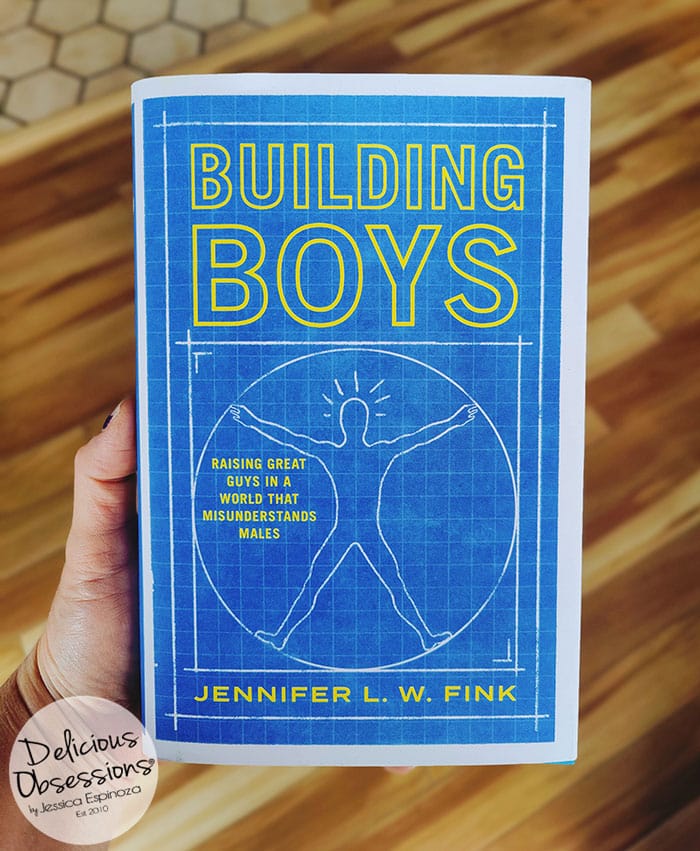
Homeschooling from Day 1
My husband and I have always planned on homeschooling our son because we don’t want him to feel pressure to perform at a certain academic level when he may not be ready for that. We want to encourage the development of creativity, critical thinking, and problem-solving from the beginning. We want to allow him the freedom to learn in the way he wants to learn and focus on the things he’s interested in. These are areas that the public school system is woefully inept in. The way our educational system is structured simply does not allow for any of this. There are also a million other reasons why we would not send our son to public school, but that is a story for a different day.
As Jacob has gotten older (at the time of this writing he is three and a half), I have continued to do a lot of study and research on toddler and young child brain development. I want to make sure he’s learning what he needs to learn, but in a way that is exciting and fun for him. I try to observe him and understand what makes him “tick” so that I can use those things to foster his love of learning. One of the biggest things that happens when we send our children to public school is that they grow to dislike learning. Learning should always be fun and exciting, no matter your age. I never want our son to dislike learning.
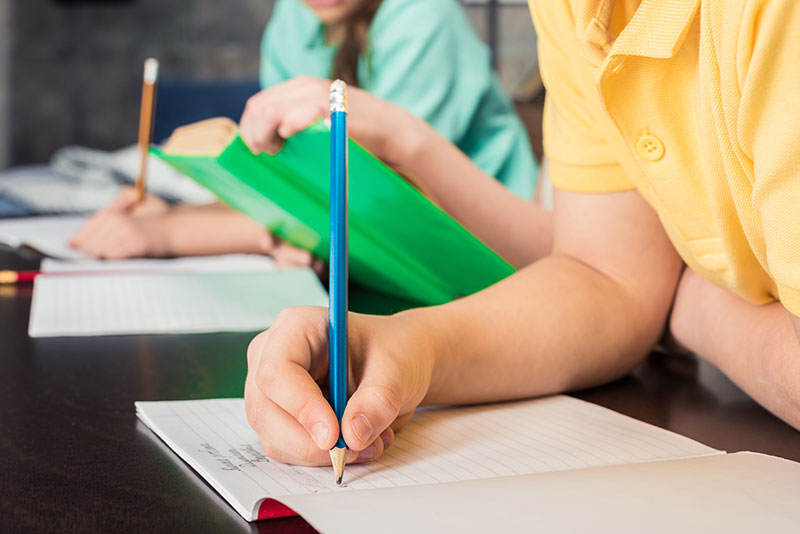
For me, the biggest part of learning at 3 1/2 years of age comes from practical, everyday things that we do routinely. Essentially, he is learning from living his life with his family. I encourage him to help me cook, he helps vacuum and straighten up the house, we read a lot, he “plays” the piano, and of course, we play with lots of open-ended toys as well. He also gets screen time with educational games and activities. Our library has a wonderful assortment of devices called Launchpads and they have become his “computer” that he can use during screen time. They have no internet connectivity and are only loaded with games, stories, and activities for his age range. Check out your local library for lots of awesome ideas and resources for your family and activities for toddlers.

5 Practical Skill Activities for Toddlers
Today, I’m going to talk about five practical life activities for toddlers. Activities that are not only fun for the toddler, but they teach them basic skills that they’re going to need for the rest of their life. The best thing you can do for your child is to make learning fun and exciting. Make them want to learn every day.
You’ll see me talk about some of the specific toys that we use for these activities in the post below. One of my favorite creative learning toy companies is Lovevery and their toys are in regular rotation at our house. I’ve written about them before in the following posts:
- 6 Reasons Why Sensory Play is Important for Infant and Toddler Development
- 5 Reasons Why Hand Strength and Dexterity Are Crucial for Baby and Toddler Development (+ 5 Toys That Help!)
- 5 Ways to Incorporate Montessori Learning Methods at Home (even if you know nothing about Montessori!)
- 5 Reasons Why Building Blocks Are Good for Toddler Development
- Practical (and Thoughtful) Gifts for New Parents
I have been blessed to partner with Lovevery a number of times, but I’ve also purchased kits from them because I just love their products so much. The two primary things that I love about Lovevery, are first, that they have high-quality toys that hold up to the roughest of toddlers and second, they are developmentally appropriate for that age range, without putting your child in a “box”. They recently sent me the Problem Solver Play Kit and the toys we used in this post are from that specific kit.
Lovevery’s Stage-Based Play Kits are:
- designed by child development experts to be exactly what children want and need at every stage.
- created to help minimize clutter and also be aesthetically pleasing for adults and children alike.
- thoughtfully crafted to be 100% child-safe using sustainable materials like 100% FSC-certified sustainably harvested wood, organic cotton fabrics, and other child-safe materials.
- durable (as mentioned above) and stand up to the roughest of toddler play.
Do you have to have these, or any other toys, for learning these skills? Absolutely not! They do make things fun and sometimes easier, but they are definitely not required. I’ll share alternatives below for each activity to hopefully spark some inspiration for you.
And now, on to the fun!
Colors and Color Mixing
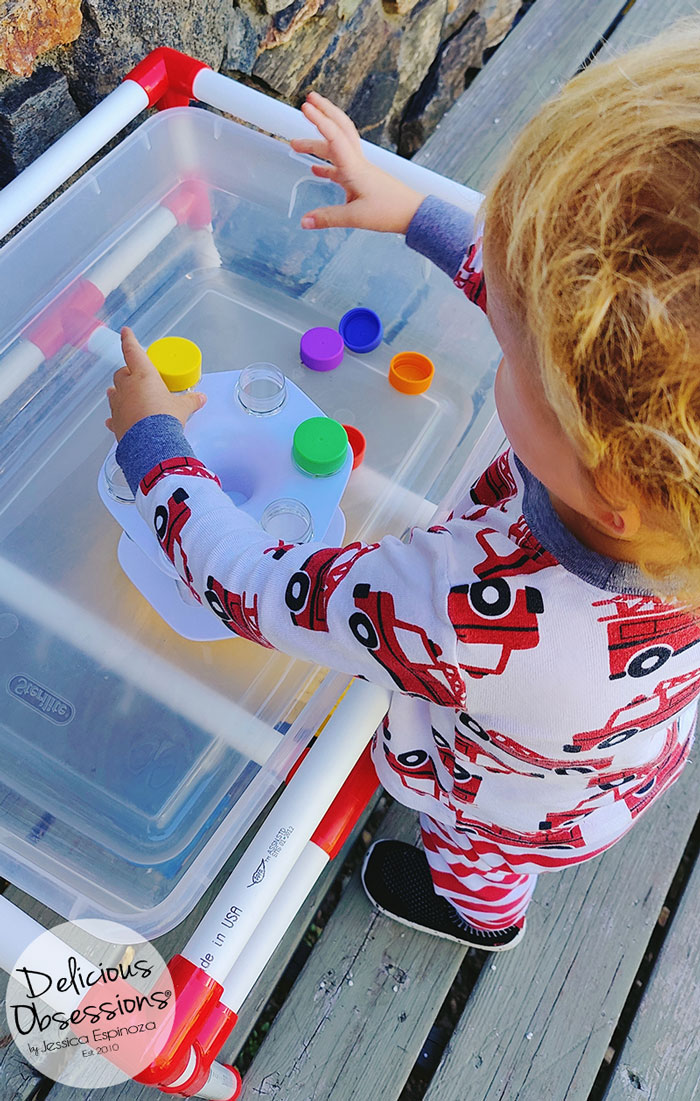
Learning primary colors is one of the first things that your young child is going to learn. It’s really easy for us to teach them colors because color is all around us. Learning the primary colors of red, blue, and yellow is the foundation for them to learn secondary and tertiary colors. Obviously, knowing our colors is a really important part of our lives. We need to know colors in order to obey traffic signals and keep ourselves safe around hot (like the stove) and cold items (like dry ice). Take a moment to look around you and notice just how much we rely on colors to keep us informed and safe in our everyday lives.
Once your child understands their primary colors, they get to enjoy learning about secondary colors. This is where color mixing comes in and it is a lot of fun. Color mixing helps enhance your child’s cognitive abilities and observational skills. This is actually one of their first introductions to science and allows them to develop cause-and-effect thinking skills, how to make predictions, and how to compare results in a finished product or experiment.
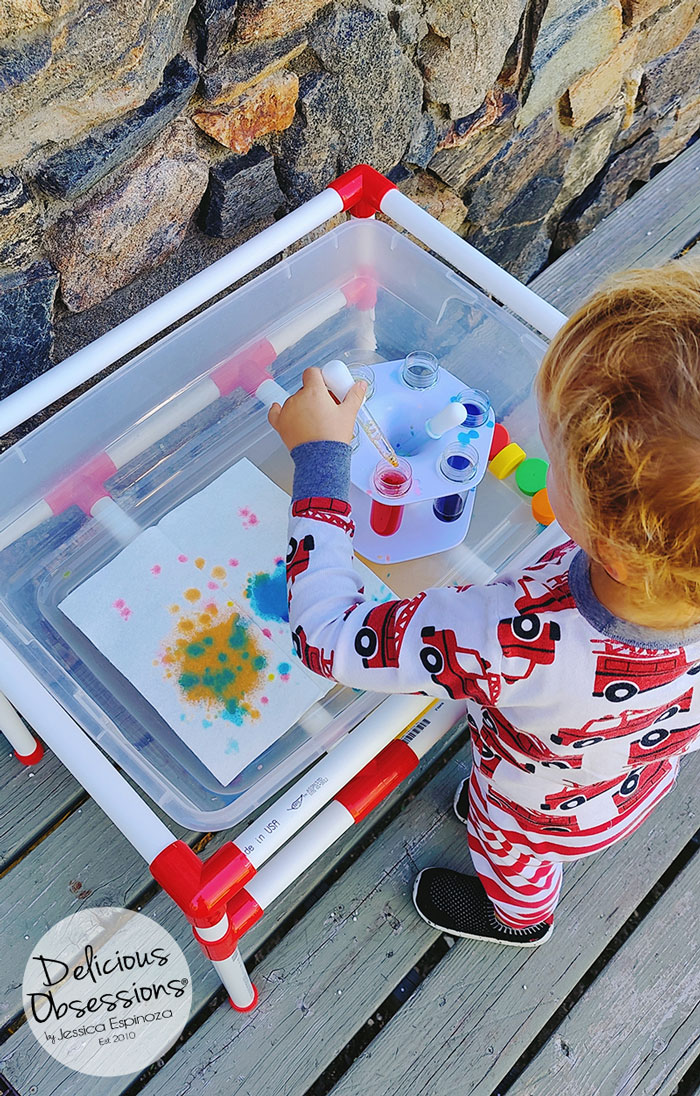
About a year ago, my husband started a little game with Jacob where he would hold one hand open and say, “color name” and then he would hold the other hand open and say, “plus color name makes?” And then he would clap his hands together as he gave the answer. For example:
One hand opens and he says, “blue.” Second hand opens and he says, “plus red makes…”
Then he claps and says, “purple!”
Jacob loved this when his dad started doing it and would giggle and have so much shouting the answer as he learned about colors (and now he does it all the time on his own).
To take this to the next level, we introduced him to color mixing with paints. Honestly, he wasn’t that excited about it. The thing that REALLY got him excited and understanding the concept of primary and secondary colors was Lovevery’s Liquid Color Lab from the Problem Solver Play Kit. There was something about learning to use the droppers (a life skill in and of itself — he struggles with this right now) and dropping different colors together that really started helping him understand these concepts. He also learned that when all of the colors are mixed together from the color lab, it makes a really dark swampy green color as you can see in the photo below.
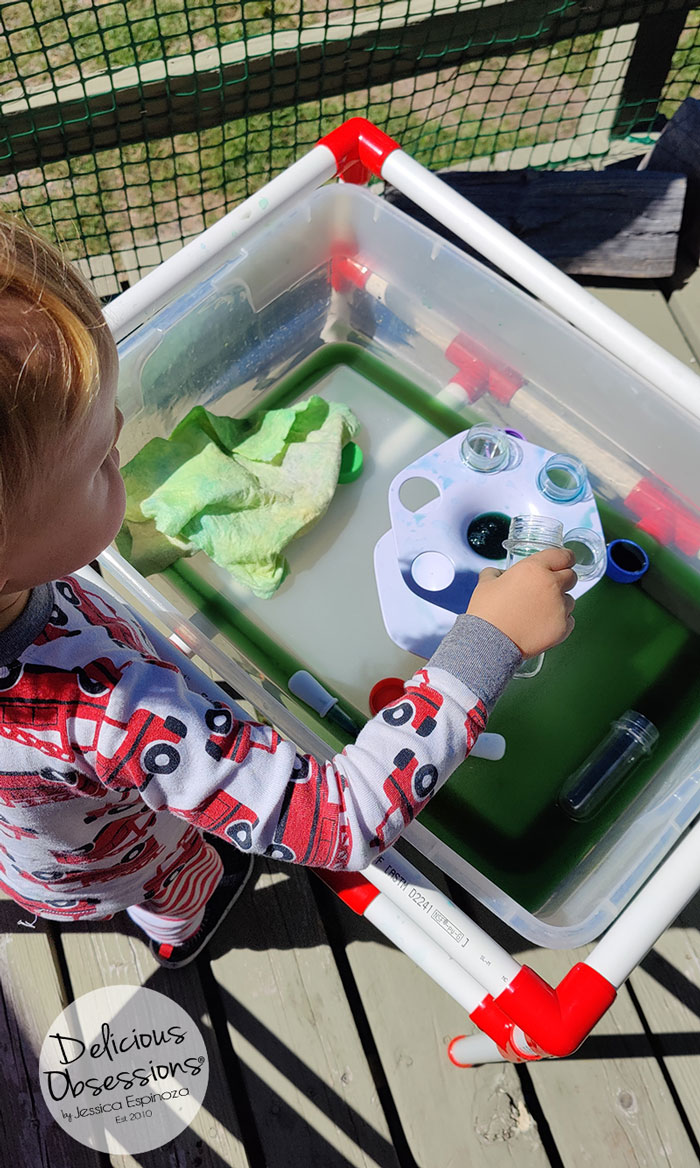
As I mentioned above, using paint is a great way to show primary and secondary colors. However, for some reason that didn’t resonate with Jacob as much as this color mixing lab from Lovevery. I think it’s because the color change happens immediately with the water, whereas with paint, it takes a little longer before you can see the new color as you stir the two paints together. When you’re mixing the liquids, it’s an instant change.
If you don’t have this item from the Lovevery kit, I’m sure you could use food coloring and water to do the same thing. I haven’t played with this yet, but I will when we run out of the dissolvable color tabs from Lovevery (unless I can figure out how to order more because they are awesome!).
Sorting and Categorizing
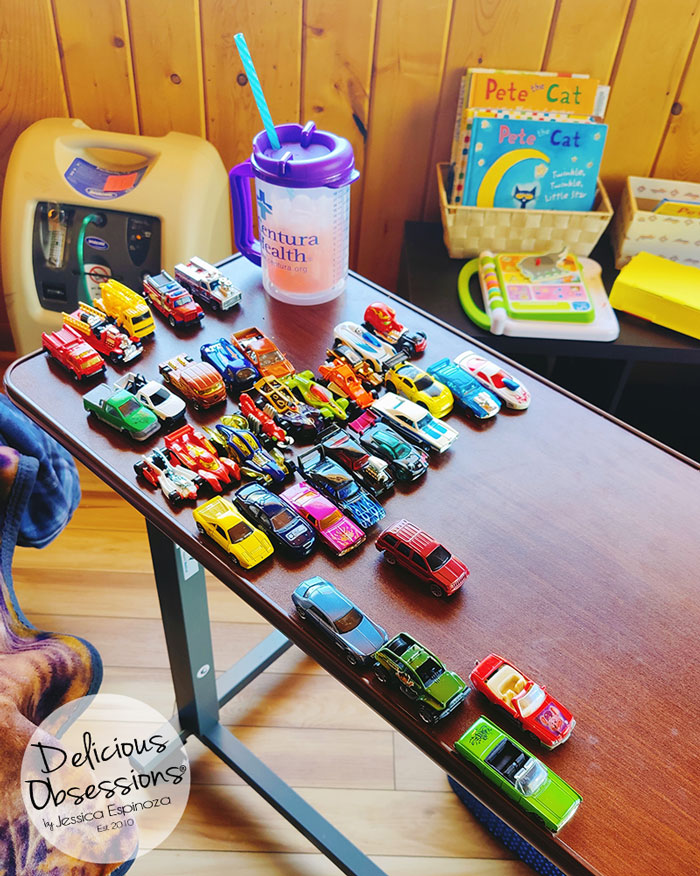
Sorting and organizing are important skills and activities for toddlers to learn because it helps them notice the differences and similarities between objects. It also helps them learn to categorize and builds the foundation for basic math skills in the future. Learning how to sort and match at an early age will actually make learning math a lot easier. When you think about it, we as adults, are regularly sorting and categorizing throughout our life. There’s not a day that goes by that we’re not sorting or categorizing something, in some way. In the photo above, Nana (my mom) was helping Jacob sort all his Matchbox cars by type.
Jacob has always been interested in sorting and categorizing. One of his favorite things to sort and categorize is pom poms. Pom poms (like these here) have been a huge part of our play since he was little bitty and he loves doing all sorts of activities with them. The other day, we were bored and pulled out the pom poms and he immediately got busy sorting them into piles of different colors.
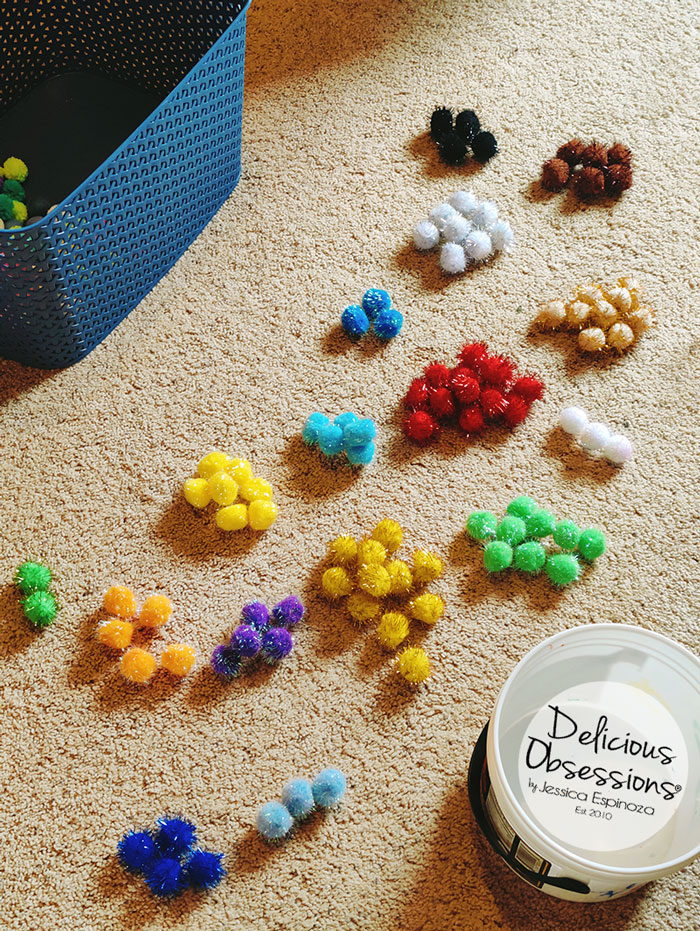
The recent Lovevery kit that we got had a bag of these Number Sense Nature Counters (seen below). This is the perfect toy for sorting and Jacob had a ball sorting them out into different piles. These Nature Counters go along with the Montessori Math Bars that also come in the same kit. I’ll talk about the math bars below.
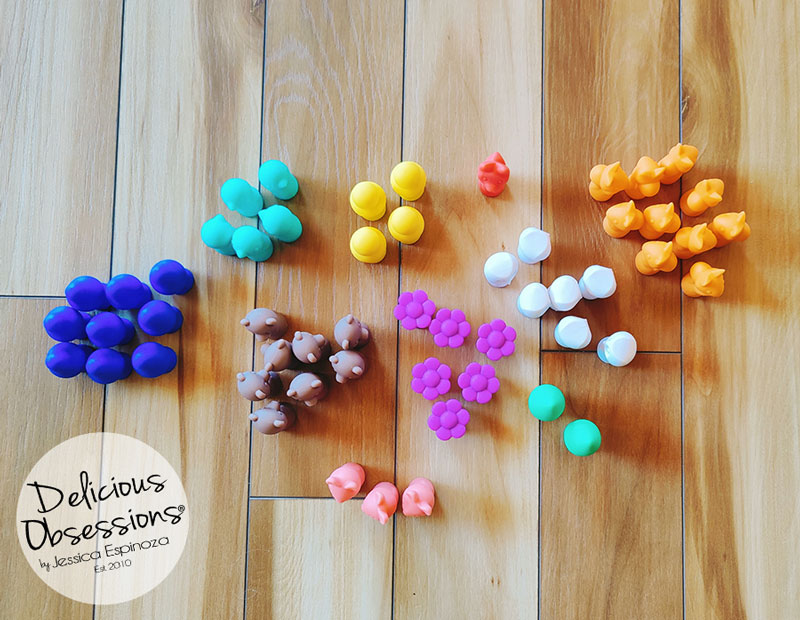
When it comes to sorting, you can use anything. You can have him sort his toys into similar/same items like the cars above, sort toys by colors, sort his clothing by colors, sort fruits, sort silverware, sort coins, etc. The sky is the limit.
Counting and Basic Math
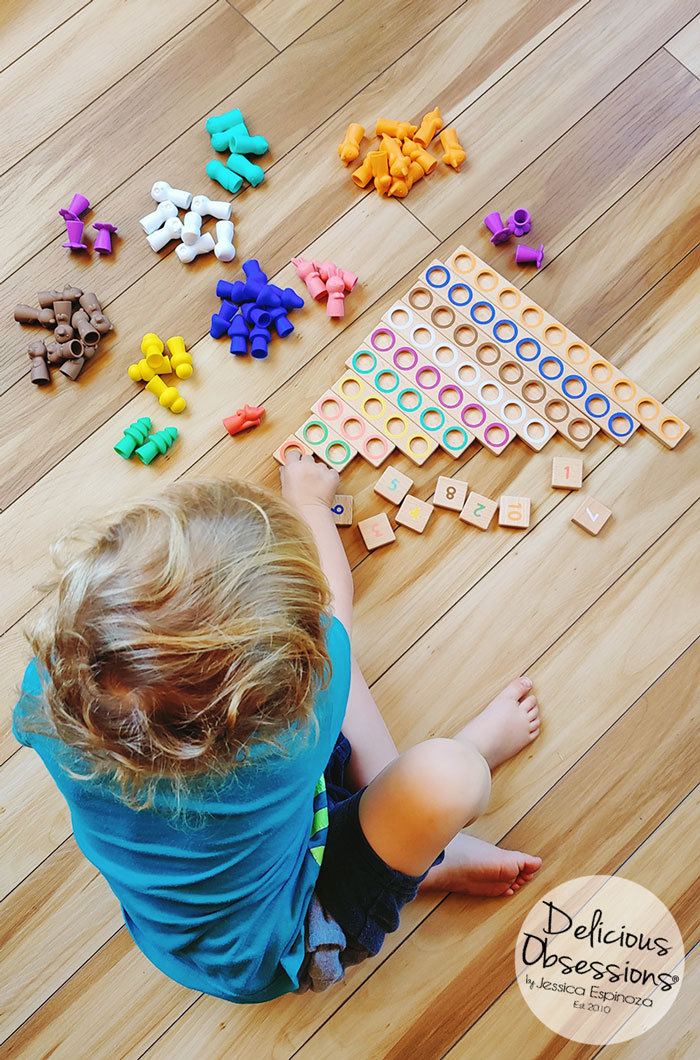
Obviously, we can’t get through life without math. We may not need all of the advanced trigonometry and calculus that we learn in high school, but basic math skills are something that every single one of us needs in order to navigate our lives. Even geometry plays a role in our lives more than we realize.
Another really awesome toy from the recent Lovevery kit is the Montessori Math Bars and Number Tiles. This toy is designed to be multifunctional, which is one but the things that I really love about Montessori-style toys and educational materials. I love things that have more than one use.
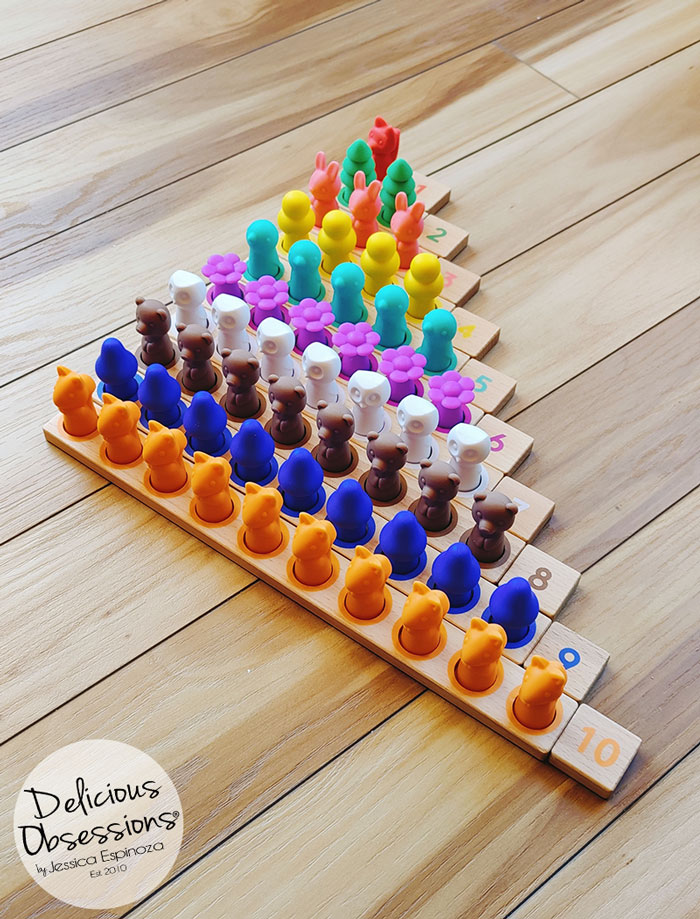
The Montessori Math Bars bars and Number Tiles are designed to help build math fundamentals visually with concrete objects that you can count, line up, compare, and organize. If your child is super interested in numbers, then you can go ahead and start teaching basic addition through storytelling using the little figures that I mentioned in the previous section and these math bars. There’s a little user guide that comes with the kit that tells you how you can get started with basic math using these tools.
But don’t worry! Even if your child is not really interested in numbers or math at this point, that’s totally fine. Remember that every child learns at a different rate and they’re going to have different interests at different times so this toy can still teach some fundamentals of numbers and math, without being overly mathematical. Never try to force your child to learn something because that’s just going to cause them to disengage and start to dislike learning. We want to strive to cultivate an explorative mindset and one that really embraces learning and education.
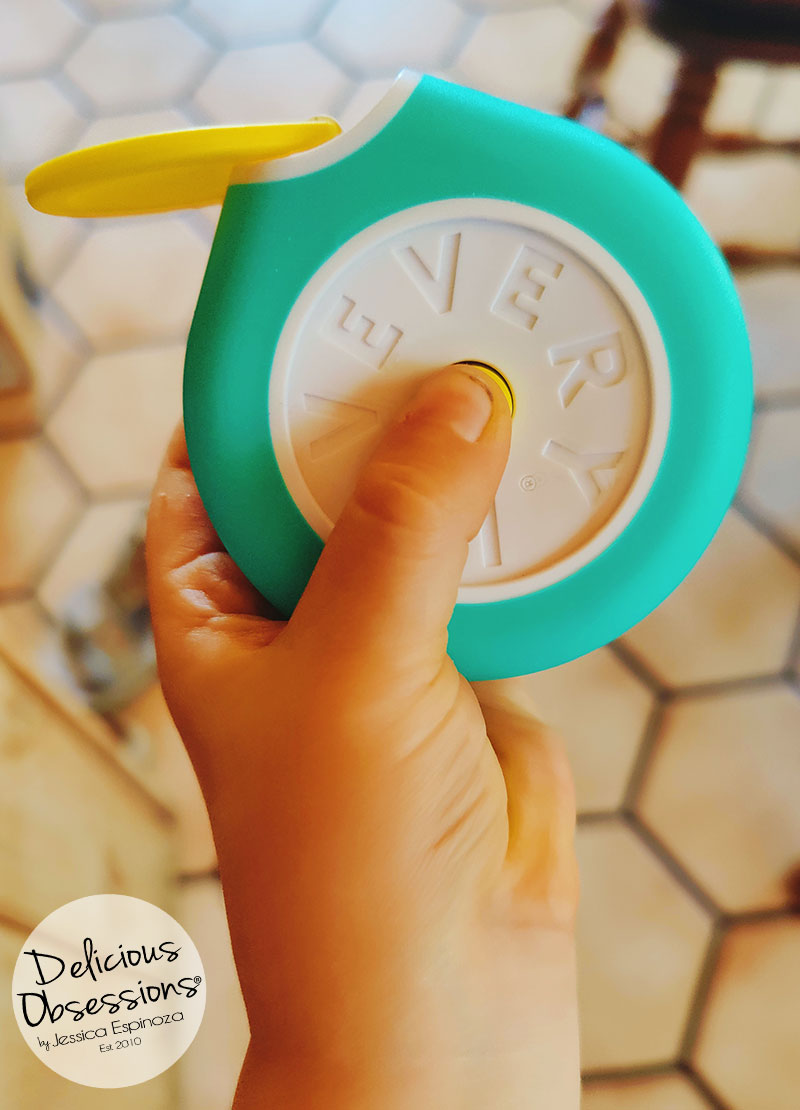
One thing that we don’t usually think of as parents as an activity to play with our kids (while teaching them basic math skills), is using a measuring tape! I love that Lovevery included a kid-friendly measuring tape in the last kit we received. Jacob’s great-grandmother is a quilter and she has a measuring tape that she leaves upstairs for the kids to play with any time they come over. He’s loved playing with that since he was about 16 months old.
While he didn’t fully grasp the concept of measuring things, he has really been enjoying pulling the tape out and pushing the button so he can watch it go back in. I have a feeling in the next couple of months he’ll better understand the concept of measuring and he’ll then start measuring everything all over the house. Especially since his dad is a woodworker and is always measuring wood for his projects. This will be a fun thing for them to bond over.
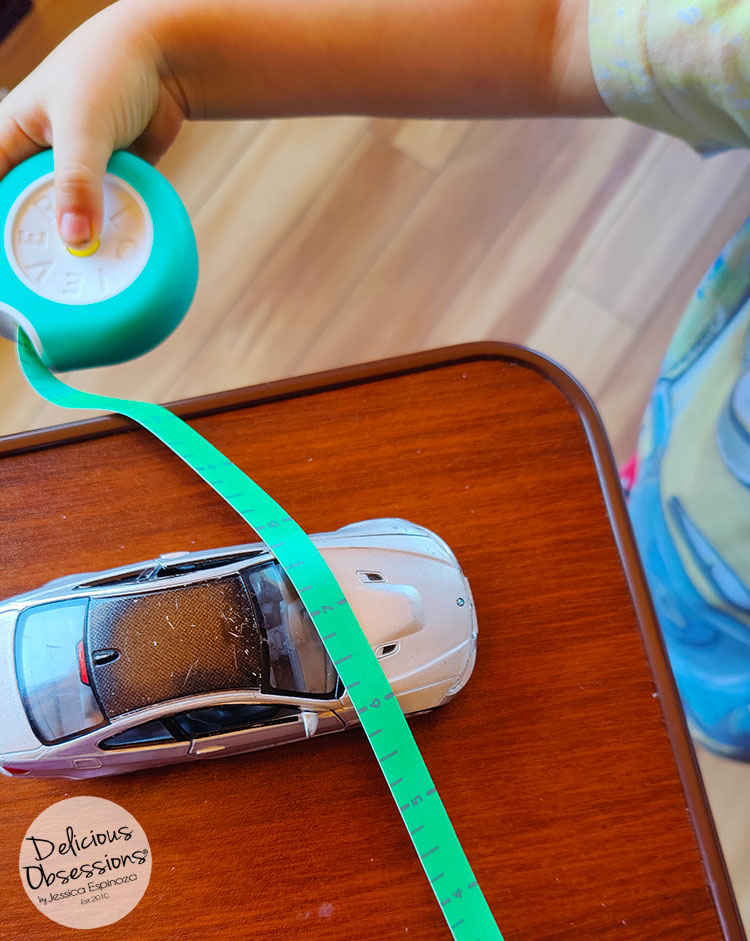
Puzzles and Games
I probably don’t have to tell you about the benefits of puzzles and games. We often see this in the news about how puzzles and games keep our minds alert and active as we age. It’s one of the most common things that is recommended to the elderly so that they can keep their mind healthier and functioning better.
Puzzles and games are not just great for adults, they are excellent for children too. Keep in mind that you need to select games that are age-appropriate for your child, but most children, when they get to about three years old or so, are going to be really interested in puzzles.
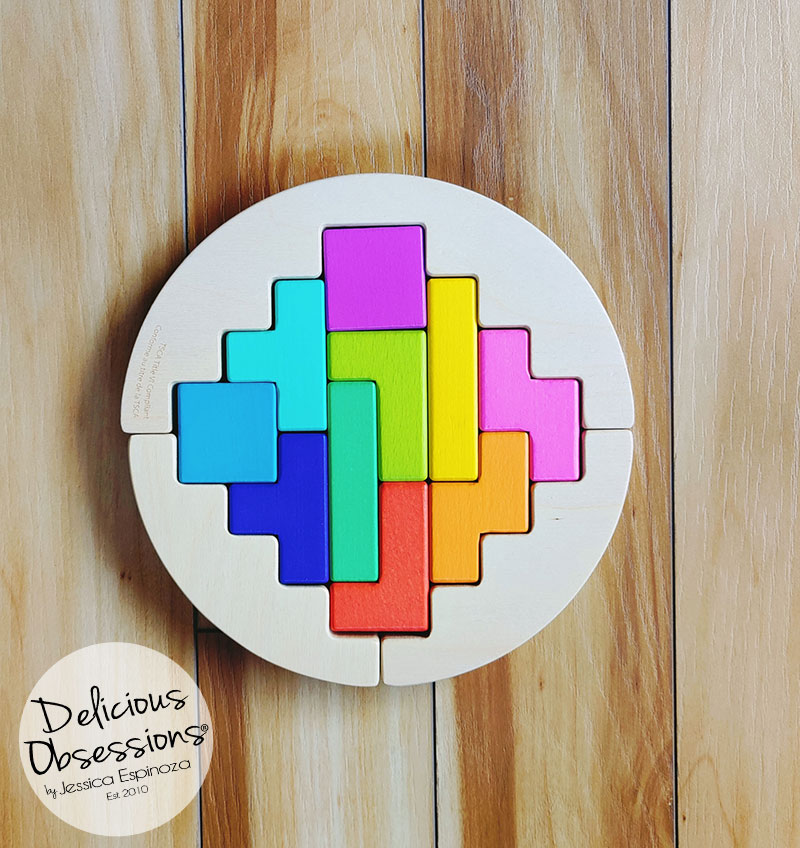
Jigsaw puzzles are a great way for your child to develop coordination, finger strength, learn cause and effect, and improve problem-solving skills. It’s also a wonderful way to help improve their hand-eye coordination, as well as improve spatial recognition and visual perception skills. One thing I’ve also noticed with the introduction of jigsaw puzzles is that it helped improve Jacob’s attention span (even though it’s totally normal for a 3-year-old to have a very short attention span). Puzzles are also excellent for helping a child with memory, patience, and self-esteem.
About 6 months ago, I noticed that Jacob started taking an interest in puzzles. I started getting him some age-appropriate puzzles and he really had a great time putting them together. I have noticed that one of Jacob’s Love Languages is quality time, so doing puzzles is a great way that to spend focused quality time together. We have a ton of puzzles now we do at least one puzzle every single day.
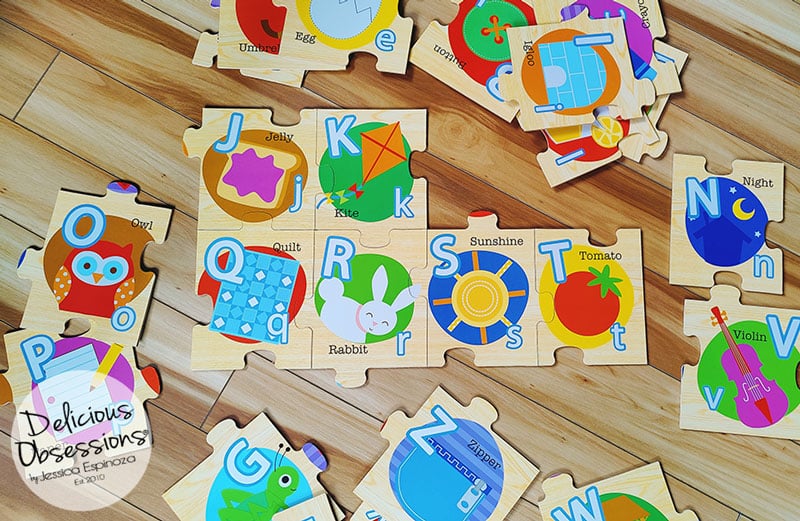
In the most recent Lovevery kit, they included a three-dimensional puzzle, called their Wooden Wobble Puzzle. This puzzle was extra exciting when we pulled it out of the box because not only can you put it together flat on the floor, but you can set it on edge and put it together while it’s balanced in the air. This puzzle is a great way to help your child start learning about cause and effect and balance. Believe it or not, it’s also a great way to introduce geometry, as they are playing with different shapes and learning how those shapes fit together. While there’s only one way that the puzzle fits together correctly, you can build all sorts of things with the shapes in a million different combinations. You can also use all three sides of the wooden circle to build on and experiment with balance, cause and effect, etc. It is a lot of fun!
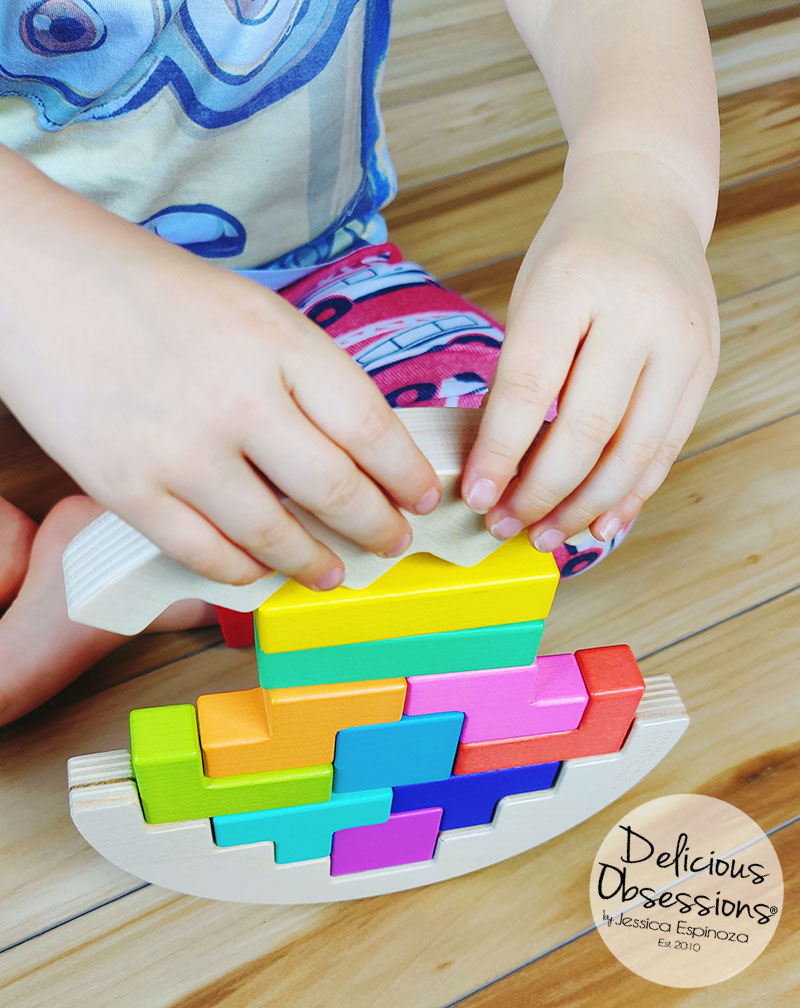
Outside of puzzles, there are lots of other games that you can play with your toddler, including things like bean bag toss, hopscotch, Simon Says, treasure hunts, obstacle courses, etc. A simple Google search is going to give you hundreds of ideas that you can play around your house and home.
A note on collaborative games.
Some toddlers are not going to be ready for collaborative games quite yet, and I will note that the collaborative Sea Turtle game that came in this most recent play kit was a good example of this. This game was a little bit beyond Jacob right now and it would be a source of frustration for him. So I’m going to pack it away and we’ll try it again in about a month. If there is one thing I have learned as I’ve watched Jacob develop over the last few years is that even if he doesn’t show interest in something at a specific time, if I come back to it at a later date, it will almost always interest him. His brain has to be ready for whatever that activity is and when it’s ready it’s ready, and when it’s not it’s not.
Working in the Kitchen and Home — Cutting, Mixing, Stirring, Pouring, Cleaning, Etc.
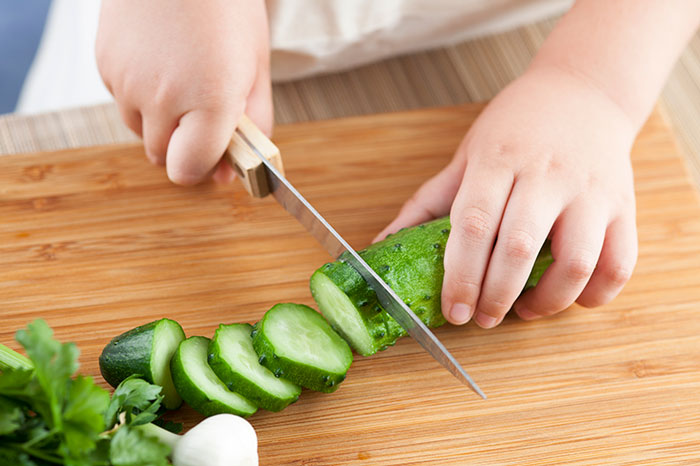
I’m a big advocate of getting your kids in the kitchen as often as you can and 3 years old is a great time to do that. Not only does it help children develop life skills that they’re going to need (because we all have to eat), but it also includes them in activities that we do every day. When our children feel included in our everyday lives, it makes them more willing to help take care of things around the house. I feel like our culture excludes children from tasks like laundry, dishes, cooking, vacuuming, etc., yet toddlers are open and willing to help do pretty much anything we ask them to do. Jacob just recently started vacuuming on his own and I have to say he does a really good job.
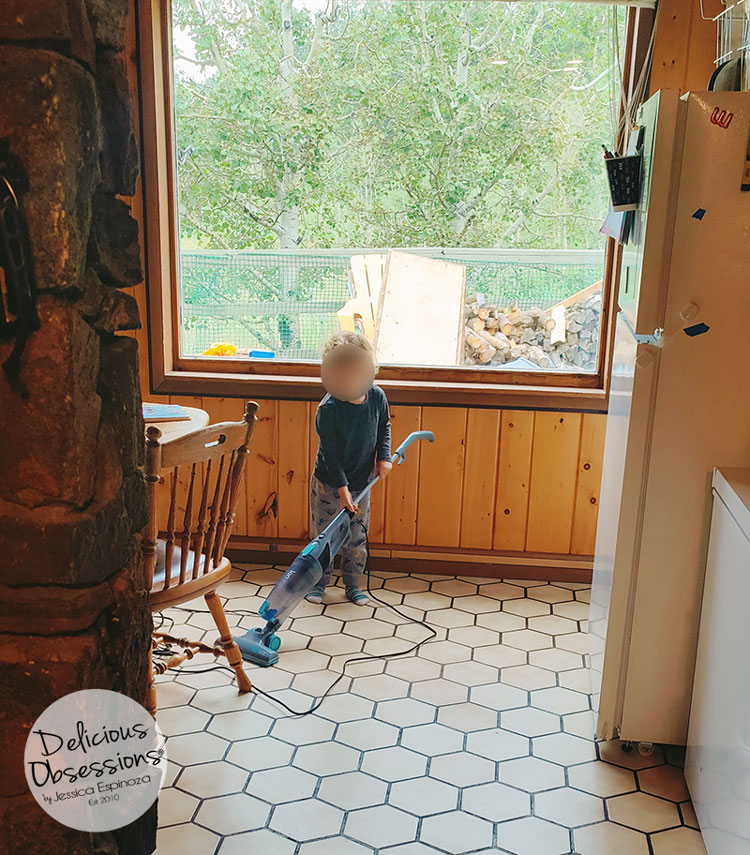
Getting your kids into the kitchen and including them in household tasks can sometimes feel overwhelming. I will preface this by saying that it is going to take more time. If you are in a big hurry and in a time crunch, then that is not the right time to have your child help you. It’s just going to lead to frustration and it’s not going to make for a pleasant experience for anyone. But, if you can build in extra time to have your child involved in the work you’re doing, I can guarantee it’s going to pay off.
You can have them do anything from helping with dishes to wiping down the kitchen to preparing the food. Have them help make some muffins or cookies, or help prepare the vegetables for your salad. I recently started having Jacob help cut the strawberries that he eats for breakfast and he loves his little knife (linked here) and feeling like he’s included in the preparation of his food. We’ve also been working on understanding the difference between hot and cold, the dangers of working around a stove, and how we have to be careful when we’re cooking.
Don’t be afraid to have your children in the kitchen or help around the house. They need to learn how to prepare food and be safe while doing so. They obviously need to know how to do dishes, clean, do laundry, etc. This is also a great way to help build their foundation of healthy eating and how to do their part to keep the household running smoothly.
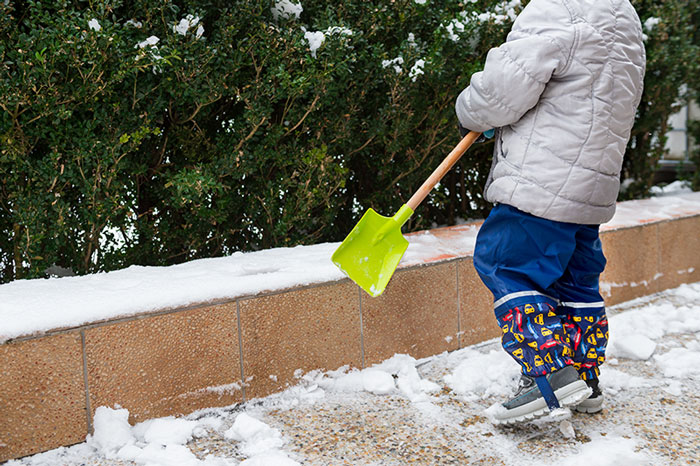
Everything is an Opportunity for Learning
In this post, I talked about five practical skill activities that I’m doing with my almost three-and-a-half-year-old right now. But there are literally thousands of things that you can do with your children to teach them basic life skills at any age. The biggest tips I can offer are:
Take time to observe your child.
What do they like? Where do their interests lie? What are their strengths? What are their weaknesses? Take time to observe them as they’re playing and you will really get a better understanding of who your child is and what makes them tick.
Don’t be afraid to involve your child in your everyday life activities.
As a society, I feel like Americans tend to detach adult tasks from their children. Things like cleaning the bathrooms, doing laundry, doing dishes, sweeping and mopping the floor, etc. These are all things that young toddlers can get involved in. Even as early as 12 to 18 months they can get involved in little things around the house. Not only does this teach them how to do these tasks, but it makes them feel included in the family and it will encourage them to participate and do their part to keep the household running smoothly.
Get creative!
While I am a huge fan of Lovevery and their toy kits, I know that not everyone is interested in those. They are definitely not the only things we play with and use in our house. There are so many things that you can do for free or little cost that will help your child learn the basics that they need to learn. A simple Google search for any question will yield hundreds if not thousands of results. The only limit is your creativity!
Have fun!
I’m not going to lie, I have my fair share of moments where I feel like I am not doing a good enough job, he’s not learning the things he should be learning, etc. It’s really easy to get caught up in that mindset when we live in the society that we do today. But, I pull myself back and I look at him and I realize that he’s exactly where he needs to be right now. And I am exactly the mother that he needs. God gave us the most amazing and precious gift when He answered my prayers and sent us Jacob. I try not to spend a lot of time taking that for granted. One of the best things that you can do for your child is to show them how to have fun and be joyful every single day. I’m far from perfect at this, but I am striving to implement lots of joy and fun into every day.
Want to Learn More About Toddler Development?
If you’re interested in baby and toddler development and want to learn more, check out these posts! This is a topic that I am passionate about and I’ve spent much time doing research on how toddler’s brains develop so that I can learn to work WITH my child, rather than against him during these formative years.
- 6 Reasons Why Sensory Play is Important for Infant and Toddler Development
- 5 Reasons Why Hand Strength and Dexterity Are Crucial for Baby and Toddler Development (+ 5 Toys That Help!)
- 5 Ways to Incorporate Montessori Learning Methods at Home (even if you know nothing about Montessori!)
- 5 Reasons Why Building Blocks Are Good for Toddler Development
